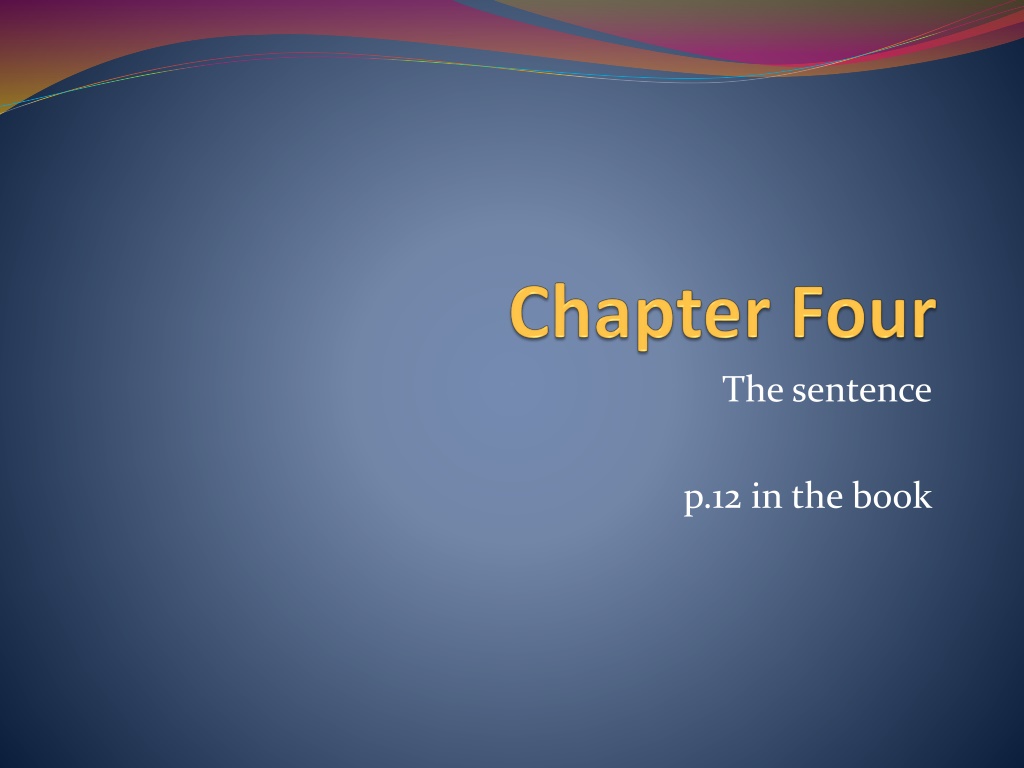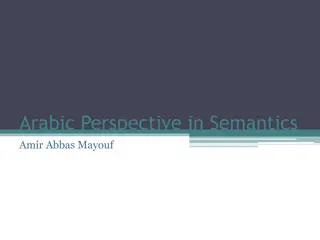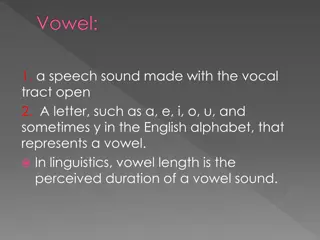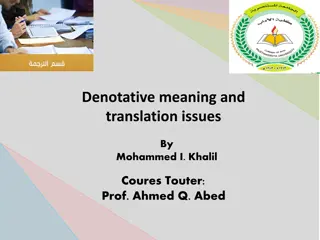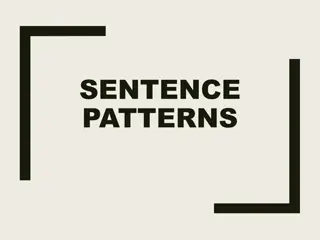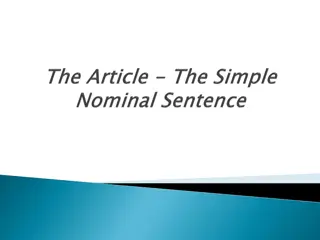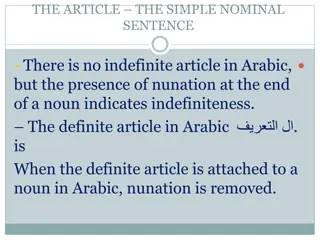Understanding Sentence Patterns in English and Arabic
Explore the classification of sentences, elements, and patterns in English and Arabic languages. English sentences are categorized based on clauses, while Arabic sentences are classified by initial elements. Learn about the basic sentence patterns and the combination of elements in both languages.
Download Presentation

Please find below an Image/Link to download the presentation.
The content on the website is provided AS IS for your information and personal use only. It may not be sold, licensed, or shared on other websites without obtaining consent from the author. Download presentation by click this link. If you encounter any issues during the download, it is possible that the publisher has removed the file from their server.
E N D
Presentation Transcript
The sentence p.12 in the book
Sentence Elements and Patterns Sentence is divided into three types according to the number of clauses it contains: 1.simple (which consists of one clause) 2. compound (which consists of two independent clauses). 2. complex (which consists of more than one clause where just on of them is independent) 4. complex-compound (which combines the two)
Examples A complex sentence A simple sentence John arrived late John who is my friend arrived late . A compound-complex sentence John who is my friend arrived late and he was very tired A compound sentence John arrived late and he was very tired
The focus of the present chapter is on simple sentence only because the other types will be dealt with in other chapters.
English Sentence Elements and Patterns The simple declarative sentence in English can consist of the following elements: 1.Subject (S) 2. Verb (V) 3. Object (O) 4. Complement (C) 5. Adverbial (A)
The five elements mentioned earlier can combine according to the following eight basic sentence patterns: 1. SV: John left. 2. SVO: Mary bought a car 3. SV Oi Od: She gave me a book. 4. SVA: John is here. 5. SVC: The teacher became impatient. 6. SVOC: They have elected John president. 7. SVOC: She put the vase on the table. 8. SVSC: There is a man at the door.
Arabic elements and sentence patterns It has to noted that Arabic sentence is classified in to two types according to the element that occupies the initial position in it : verbal and nominal A verbal sentence begins with a verb. A nominal sentence begins with a noun. .
Elements of the Arabic verbal sentence Verb V Subject S Object O Adverbial A
These elements may combine to form the following basic sentence patterns: 1. VS 2. VSO 3. VSOO 4. VSOOO 5. VSA 6. VSOA 7. VOSOA
Elements of the Arabic Nominal Sentence It consists of a Topic and a Comment The Topicmust be a nominal element whereas the Comment can be a noun , an adjective, a phrase , a nominal sentence , or a verbal sentence.
Examples of a Comment in Arabic Noun Adjective Prepositional phrase Locative adverb Temporal adverb Nominal sentence Verbal sentence
A contrast of Sentence Elements and Patterns in English and Arabic English Arabic 1. E has specific sentence elements and patterns. 1. The same 2. E has S,V,O, A,C The same
The Differences 1. In Arabic, these functions are marked by case endings that are retained that are retained by the elements regardless of their position in the sentence. 2. Arabic has two types of sentences ,verbal and nominal. 3. Arabic has a complete sentence realized by one word ,e.g. 1.In English, the syntactic functions of sentence elements are determined by word order. 2. English has only verbal sentence. 3. English has no complete SVO realized by one word. 4. E allows an indefinite noun to occur initially a copulative sentence: A man in the house. 4. Arabic allows only definite in this position:
The Differences English Arabic 5. E allows the compounding of nominal phrase modifiers I like the color, shape, and size of the toy. 6. E verbs are not tritransitive 7. In E simple declarative sentences , the subject is an obligatory realized element. Ali entered the house. 5. Arabic doesn t allow such compounding 6. A are tritransitive,i.e. are followed by three direct objects (VSOOO) 7. In Arabic ,the subject may be over or covert
